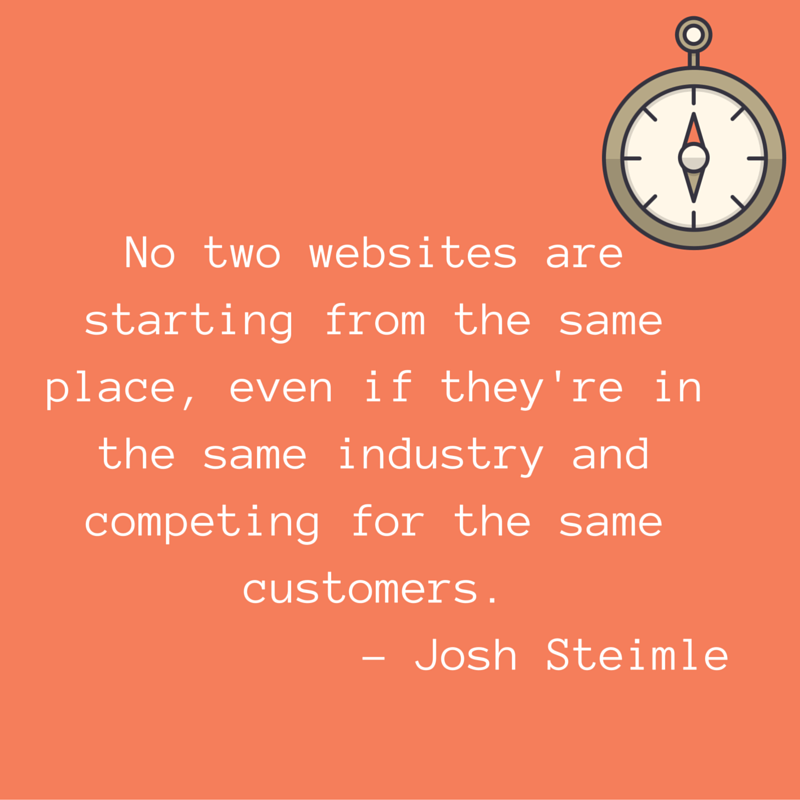Search engine optimization (SEO), which some of you dread (of course, we know), seems like a daunting task. Well, it doesn’t seem so because it is really daunting. If you aren’t doing SEO yourself, you might not understand the dauntingness (love this word) of it all. This is particularly if you are letting an SEO company to do all the optimization works for you, which is completely a-okay.
Lucky for you, but if you want to know what you are paying for the man-hours involved, here’s a simple walkthrough.
The simplest answer
To answer the question, you will need A LOT of time to do SEO.
SEO is a multi-factored activity. It also depends on what optimization works your company needs. For example, a website that is nowhere near the top 10 search engine results page (SERP) requires more time than a website that is already ranking on positions 11 to 20 for specific keywords. These are your factors; I haven’t mentioned competition yet. Definitely, at least one of your rivals are implementing their own strategies. Likewise, the competition against top ranking keywords is another story.
Thus, an answer applicable to all companies is difficult to come by. All we can say is… it depends.
The work required
There are three major opportunities to optimize a website and each opportunity involves man-hours of its own. These are on-site, on-page, and off-site.
On-site SEO
Audit
On-site optimization always starts with a website audit to determine how it is currently performing SEO-wise. Optimizers need to know how does the website appeals to both users and bots. A thorough audit will be the foundation of the future improvements on the site so this must be taken seriously.
Among others, the tasks involved are:
- Analyzing the site speed
- Checking the keywords used
- Conducting a keyword research
- Analyzing the link profile (internal and external)
- Analyzing the navigation (if the site is intuitive)
- Checking if the site already includes micro formatting (URL, logo, and other markups)
- Analyzing contents including structure and duplicate
- Identifying errors (i.e. broken links, missing pages, bad codes, heavy images, etc.)
- Checking the sitemap
- Checking the social media activities (i.e. social widgets installation and placement)
- Checking the site’s mobile-friendliness
- Checking the site’s overall security
- Checking Google Analytics and Google Search Console (formerly Google Webmasters Tools) implementation
Estimated time: 8 to 40 hours
* More man-hours will be needed if the website will require a redesign
On-page SEO
On-page SEO forms part of the on-site SEO. It’s just that the former is taken on the page level while the latter is considered on the site level. The tasks involved are:
- Checking the tags (i.e. title, meta, header, image alt, etc.)
- Checking whether each page has unique tags
- Assigning landing pages or creating new ones for each keyword
Estimated time: 8 to 16 hours
For these on-site and on-page SEO, it would be much better to check this checklist so you’d really understand what needs to be done.
Set-up
Setting up the SEO campaign starts with the implementation based on the results of the audit. The tasks involved are:
- Implementing recommendations based on the analyses
Estimated time: 16 to 40 hours
Monitoring
After completing the initial setup, period checkups must be implemented. Adjustments must be made based on the results of each checkup. If any issues arise (major and minor), troubleshooting is required as well. Specifically, the tasks involved are:
- Checking Google Analytics and Search Console
- Measuring the campaign
- Analyzing for improvements
- Troubleshooting based on the recommendations
- Preparing ranking and traffic reports
- Drafting new recommendations based on the reports
Estimated time: 4 to 8 hours per week
Off-page SEO
Off-page SEO are optimization efforts performed beyond the site. Nevertheless, this aspect of SEO comes in various forms and completely depends on the extent that you want to invest on it. These are tactical and yet technically optional. The tasks involved, but are not limited to the following, are:
- Building and earning links
- Promoting contents on social media
- Doing other peripheral SEO strategies
Estimated time: 12 to 24 hours per week
Content development
Content creation is another daunting task and an ongoing one at that. Writing a blog post, press release or article may seem easy, but it is not. The amount of research involved alone may discourage you. Alternatively, you can outsource content writing to a service provider. In this way, you may focus on other more important things to do.
Estimated time: 4 to 16 hours per week
A basic caveat
In every task, you may use a tool, but be careful what you use. Basically, the use of tools is subjective. There are hundreds to thousands of SEO tools and apps online; it’s up to you to choose which one you think is the right fit to your purpose. [Notice that I said ‘the right fit’ not ‘the best tool’ because all of them claims to be the best. Pun intended.]
For best results, try using Google’s products (Google Analytics, Google Search Console, Google Trends, Google Keyword Planner, etc.). They’ll tell you what to do exactly. We use this tools for our audits as well as other tools online such as Screaming Frog and Moz.
The plausible timeline
Month 1 – Audit and analysis
An entire month will be devoted to analyzing the website and its current strategy. Recommendations must be made based on the analysis. It is possible to conduct the analysis and technical changes within a month.
Month 2 – Technical SEO
Again, the technical changes may have already been implemented by this time. If the website requires more than just simple coding tweaks, this can go on for at least 2 months. That’s why it is advisable to consider SEO when developing a site from scratch or during a redesign. Nevertheless, while technical SEO is on the works, building contents and links may start now.
Month 3 – Content development
Once everything’s implemented, the foundational works such as creating contents may start now. An entire month might be needed, but this will still depend on the types of contents that you want to be created. If you’ve started publishing contents on the second month, you might be seeing results on the end of the third month.
Moreover, the succeeding months must be devoted to ongoing content creation, link building and technical optimization. You have to do this to improve your search performance to the tune of #1 position. Yes, aiming for that position is hard, but no one says that it’s impossible.
To put things in perspective, you need to invest 32 to 96 hours to do the groundwork and another 20 to 48 hours per week to do SEO. So, that’s really a lot. Again, you may do it yourself, hire an in-house SEO specialist or outsource to a local SEO company. It’s your call.
Inc | Hobo | SEOMark | Forbes | Search Engine Watch



